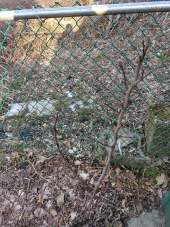


Jennifer Richardson wrote:I have been talking to Paul, and he is willing to spend a bit more if we make this a milestone stretch goal (maybe $150,000).
I'm thinking something like this:
A tracking thermometer in each of the well casings (4 total).
One at the bottom of the trench.
One midway up the trench.
One at ground level.
One at roof level on the back (mass) wall.
One at roof level in the middle of the greenhouse.
One probe-style thermometer buried in the mass.
(So about $500 worth of equipment at about $50/thermometer)
Once every two weeks, someone gets paid $100 to record and post the data, plus do some microscopy to compare the water coming in to the water going out and report the results. ($1,200 total, $100 per session, 2 sessions per month for 6 months, and then a $1,000 bonus for completing the test = $2,200).
We already have a microscope, but if we could figure out what kind of camera attachment thingamabob it needs and buy one of those (unknown cost), that would up the coolness factor of the data collection a lot, since we could post pics/video of the microscopy.
So $2,700 + whatever a microscope camera attachment costs -- say $3,000 total cost for the whole stretch goal.
Thoughts?

Charli Wilson wrote:I am in the UK, so any links to products will be ones I can get hold of. I've tried to not be too specific- everything will also be available elsewhere in the EU/US. A lot of parts can be ordered most cheaply from China if you can wait for the shipping.
You will need:
A pi, I used a pi zero W but any pi will do, old pi a/B and pi zeroes use the least energy- if you're thinking of taking this project off grid.
A micro sd card to fit in said pi, I recommended 16GB or more. No need for anything massive though.
A one wire interface of some kind, I use the sheepwalk electronics ones: https://www.sheepwalkelectronics.co.uk/index.php?cPath=22
The RPI2 v2 for the pi zero, or the RPI3 v2 for larger pi- this provides more transport buses and is suitable for more sensors, or sensors going off in vastly different directions.
DS18B20 temp sensors- either the TO92 ones, or the waterproof version if you need them to be waterproof, some ebay links as examples: https://tinyurl.com/y3xqh4ak or https://tinyurl.com/yyswyz5r
Cat 5 or cat 6 cable, and a kit to fit your own rj45 ends to these is handy as well- you’ll need the rj45s themselves, i recommend the ones with a loading bar, or pass-through connectors- for ease of getting the wires fitted, like these: https://tinyurl.com/y3g6yd9x You’ll also want an rj45 crimping tool.
RJ45 3 way connectors- buy more than you need as they’re all really jippy. The black plastic moulded ones are better than the cream plastic ones, like these: https://tinyurl.com/y2bryeh8 . Or you could go for the sheepwalk electronics 4 way connectors, these are ace- RPI3a port splitter, https://www.sheepwalkelectronics.co.uk/product_info.php?cPath=22&products_id=34
You will need a few things to develop on the pi. If you have a separate PC/laptop and wifi then all you’ll need is a microsd card reader. You will also need a monitor and keyboard with the relevant adapters to connect to the pi.

paul wheaton wrote:Maybe we will never reach this, so it might have been a waste of time to set this up, but we have now made arrangements for two more stretch goals:
$70,000: The High Art and Sublt Scienc of Scrounging by James Juczak
$75,000: Sepp Holzer's 3-in-1 Permaculture documentaries (Farming, Terraces, and Aquaculture)


Jennifer Richardson wrote:The main barrier to us doing this kind of data collection is equipment availability and compatibility with our constraints. We have no wifi on the Lab, so anything that requires wifi is out; many/most weather stations that we are interested in have required a wifi gateway. We need the data collection to be somewhat automated (not something you have to go plus a USB drive into to get the data) and the data to be conveniently shareable, preferably with visualizations, in order for it to do much good. A bunch of text posts in a thread with me manually transcribing temperatures from a screen readout once a week is not going to be of much value. And we need the equipment to function to at least 20 below zero F for the outdoor stuff--which most tracking thermometers don't--and/or to be waterproof and tolerant of humidity depending on location. This kickstarter might open up new doors in terms of equipment, since it could expand our budget significantly compared to when I was looking for tracking thermometers for the Abbey last summer, but so far I haven't been having much luck. I am open to suggestions, however.

lesley verbrugge wrote:Does anyone have any thoughts about combining a root cellar into the design. Somehow. Space is at a premium for us, and we'd like to combine the two if it's possible. Any of those clever engineering types out there with thoughts on this?
Regards
Lesley



